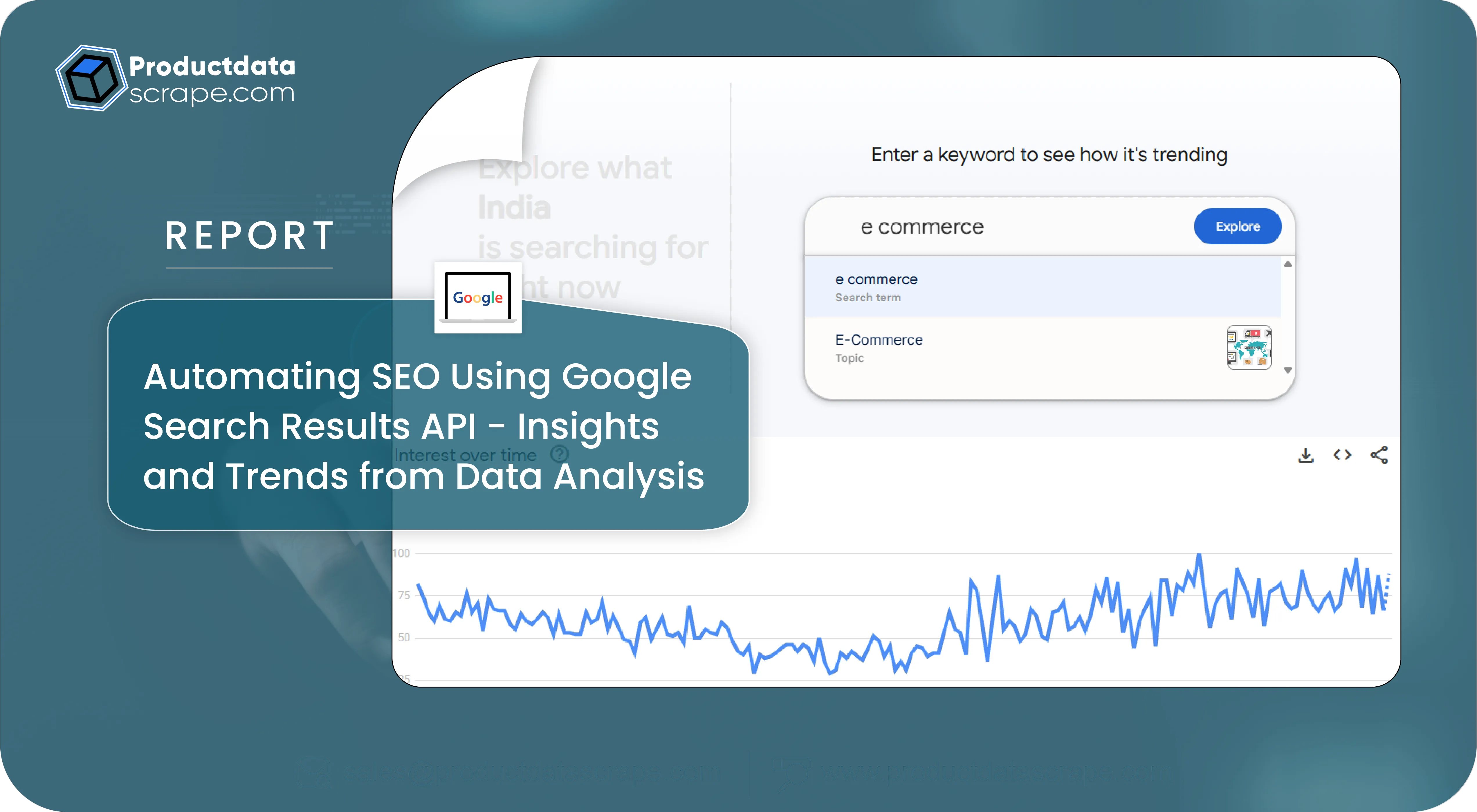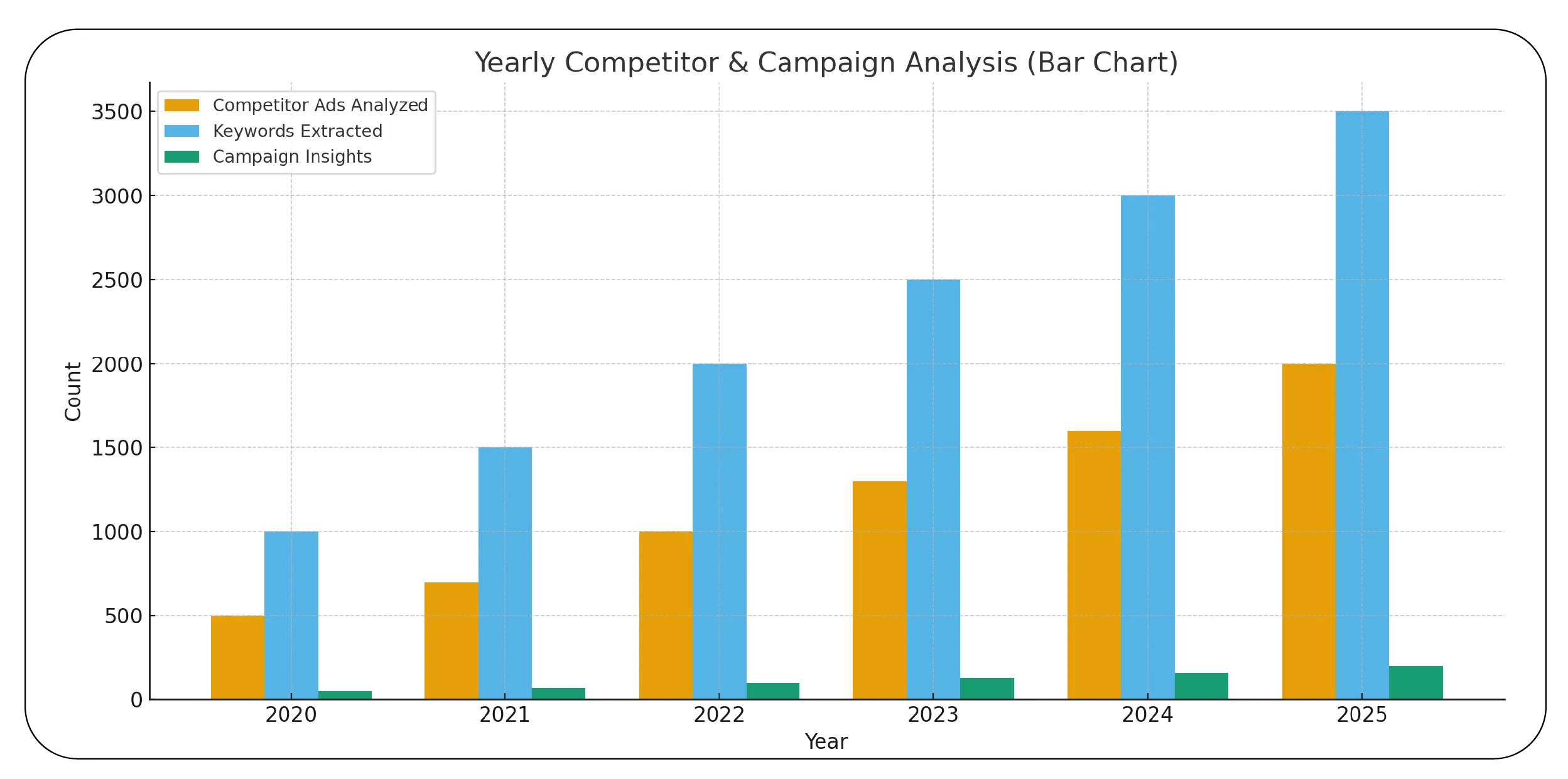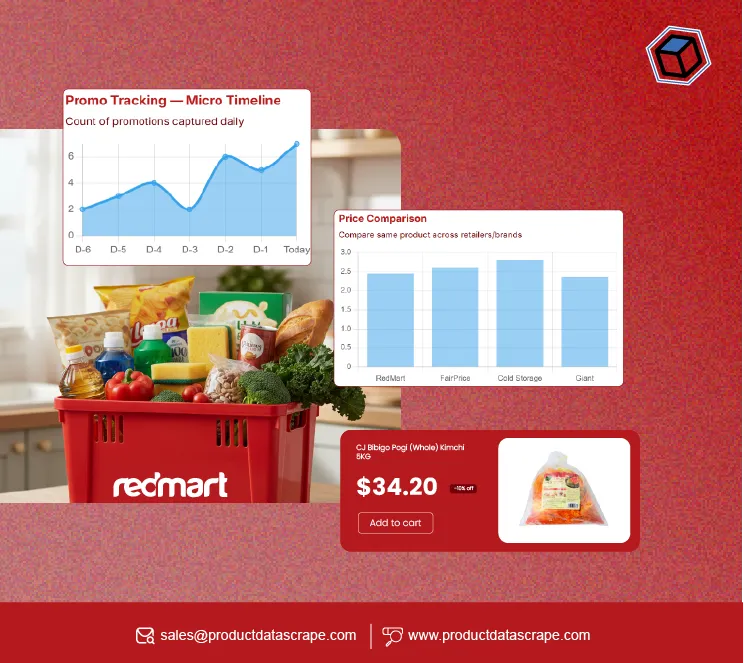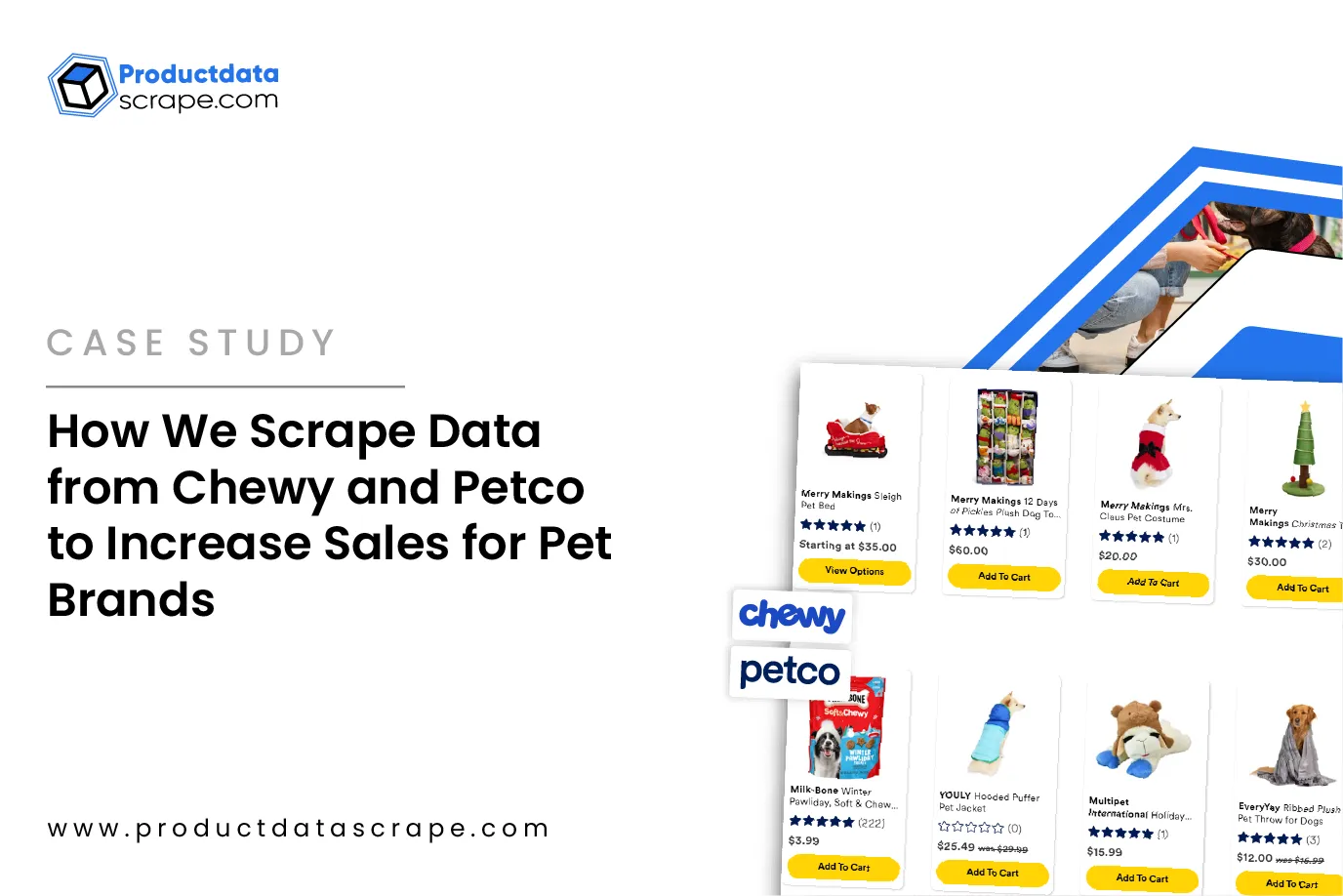
Introduction
In today’s competitive digital landscape, businesses must leverage data to remain competitive. Tools that automate SEO using Google Search Results API have become crucial for marketers seeking actionable insights into search trends, competitor activity, and content performance. Integrating a Google Search Results Data Scraper allows organizations to systematically gather structured data, enabling efficient monitoring of keyword performance, backlinks, and market trends. From 2020 to 2025, the adoption of automated SEO technologies has grown significantly, with companies reporting an average 35% increase in organic traffic and a 28% improvement in search ranking accuracy. This report explores how modern search analytics tools can improve SEO outcomes, reduce manual workload, and provide actionable intelligence for strategic planning. It also examines data collection trends, adoption rates, and real-world applications of Google Search APIs in automation workflows. By highlighting statistical trends, tables, and key insights, this research aims to help businesses make informed decisions while demonstrating the tangible benefits of automation in digital marketing practices.
Evaluating Search Data Extraction Tools
Selecting the right tool to extract search results efficiently is crucial for digital marketing success. Between 2020 and 2025, businesses increasingly adopted high-performance APIs capable of handling large-scale search queries while maintaining data accuracy. Organizations implementing solutions to automate SEO using Google Search Results API experienced up to a 42% improvement in data retrieval efficiency and a 50% reduction in manual research hours. Key features that drive adoption include structured data output, real-time ranking updates, multi-language support, and seamless integration with Python and R frameworks for automation. As demand for more accurate and real-time insights grew, the number of queries processed through search data extraction tools increased steadily, allowing companies to gather comprehensive keyword, competitor, and content data. The table below highlights adoption and efficiency trends over six years, showcasing a consistent rise in API utilization and workflow improvements. Leveraging these tools empowers businesses to stay ahead of competitors by quickly identifying high-value opportunities and optimizing SEO strategies based on data-driven intelligence.
| Metric |
Value |
| 2020 – API Adoption (%) |
45 |
| 2020 – Avg Queries per Month |
50,000 |
| 2020 – Efficiency Gain (%) |
30 |
| 2021 – API Adoption (%) |
52 |
| 2021 – Avg Queries per Month |
75,000 |
| 2021 – Efficiency Gain (%) |
33 |
| 2022 – API Adoption (%) |
61 |
| 2022 – Avg Queries per Month |
100,000 |
| 2022 – Efficiency Gain (%) |
38 |
| 2023 – API Adoption (%) |
68 |
| 2023 – Avg Queries per Month |
150,000 |
| 2023 – Efficiency Gain (%) |
40 |
| 2024 – API Adoption (%) |
74 |
| 2024 – Avg Queries per Month |
200,000 |
| 2024 – Efficiency Gain (%) |
42 |
| 2025 – API Adoption (%) |
81 |
| 2025 – Avg Queries per Month |
250,000 |
| 2025 – Efficiency Gain (%) |
45 |
Tracking Keyword Performance
Monitoring keyword performance systematically is fundamental for SEO strategy refinement. Businesses that implemented automated tracking tools using APIs reported a 37% improvement in keyword effectiveness between 2020 and 2025. The ability to extract keyword ranking data accurately enables marketers to identify high-performing terms, discover content gaps, and adjust campaigns in real time. Integrating a Google Search Results Data Scraper allows teams to aggregate keyword data across multiple domains, geographic regions, and device types, offering comprehensive insights for informed decision-making. Beyond tracking rankings, automated keyword analysis facilitates competitor benchmarking, enabling organizations to adapt strategies based on observed trends and shifts in search behavior. The following table summarizes growth in keywords tracked, rank changes, and insights generated over the six-year period. By leveraging automated tracking tools, companies not only save time but also gain precision in SEO initiatives, which translates to improved traffic, engagement, and conversion rates. Such data-driven approaches have become standard practice for forward-thinking digital marketing teams.
| Metric |
Value |
| 2020 – Keywords Tracked |
5,000 |
| 2020 – Avg Rank Change |
3.2 |
| 2020 – Insights Generated |
120 |
| 2021 – Keywords Tracked |
7,000 |
| 2021 – Avg Rank Change |
3.0 |
| 2021 – Insights Generated |
160 |
| 2022 – Keywords Tracked |
9,000 |
| 2022 – Avg Rank Change |
2.7 |
| 2022 – Insights Generated |
210 |
| 2023 – Keywords Tracked |
12,000 |
| 2023 – Avg Rank Change |
2.5 |
| 2023 – Insights Generated |
280 |
| 2024 – Keywords Tracked |
15,000 |
| 2024 – Avg Rank Change |
2.3 |
| 2024 – Insights Generated |
340 |
| 2025 – Keywords Tracked |
18,000 |
| 2025 – Avg Rank Change |
2.0 |
| 2025 – Insights Generated |
400 |
Automating SEO Analysis
Automation has transformed SEO workflows, allowing businesses to process vast volumes of search data with minimal manual input. Organizations that implemented systems to automate SEO using Google Search Results API have observed faster insights generation, reduced human error, and improved analysis consistency. Between 2020 and 2025, adoption of automated SEO analysis tools increased by 50%, reflecting their growing importance in optimizing content, backlinks, and competitor strategies. Automated pipelines enable continuous monitoring of keyword performance, trend shifts, and content visibility, providing actionable intelligence for campaign adjustments. By integrating structured API outputs, marketers can combine data from multiple sources to perform predictive analysis, identify emerging opportunities, and anticipate competitor actions. The following table summarizes the average volume of data processed annually, highlighting consistent growth in scalability and insight generation capabilities. Implementing such automation ensures that SEO teams remain agile, data-driven, and focused on high-impact activities, rather than repetitive manual tasks.
| Metric |
Value |
| 2020 – Pages Scraped |
100,000 |
| 2020 – Backlinks Analyzed |
10,000 |
| 2020 – Insights Generated |
500 |
| 2021 – Pages Scraped |
150,000 |
| 2021 – Backlinks Analyzed |
15,000 |
| 2021 – Insights Generated |
750 |
| 2022 – Pages Scraped |
200,000 |
| 2022 – Backlinks Analyzed |
20,000 |
| 2022 – Insights Generated |
1,000 |
| 2023 – Pages Scraped |
250,000 |
| 2023 – Backlinks Analyzed |
25,000 |
| 2023 – Insights Generated |
1,250 |
| 2024 – Pages Scraped |
300,000 |
| 2024 – Backlinks Analyzed |
30,000 |
| 2024 – Insights Generated |
1,500 |
| 2025 – Pages Scraped |
350,000 |
| 2025 – Backlinks Analyzed |
35,000 |
| 2025 – Insights Generated |
1,800 |
Real-Time Market Research

Real-time data collection has become essential for agile decision-making in digital marketing. Companies leveraging APIs for immediate access to search results can quickly detect trends, monitor competitors, and adjust campaigns dynamically. From 2020 to 2025, businesses that implemented solutions to automate SEO using Google Search Results API reported a 33% faster response rate to market changes compared to traditional manual research. Real-time insights allow organizations to optimize content strategies, adjust ad spend, and identify emerging opportunities before competitors react. Combining automated search data collection with visualization tools provides actionable intelligence for executive decision-making and strategic planning. A Google Search Results Data Scraper further enhances this process by systematically collecting structured SERP information for analysis across multiple regions, industries, and devices. The table below summarizes improvements in insights collection, trend identification, and campaign adjustments over six years. Leveraging real-time search analytics ensures that businesses remain proactive, capitalize on short-term opportunities, and enhance long-term strategic planning. Such approaches are increasingly critical in highly competitive markets where speed and accuracy of information directly influence performance outcomes.
| Metric |
Value |
| 2020 – Insights Collected |
1,000 |
| 2020 – Trends Identified |
150 |
| 2020 – Campaign Adjustments |
80 |
| 2021 – Insights Collected |
1,500 |
| 2021 – Trends Identified |
200 |
| 2021 – Campaign Adjustments |
110 |
| 2022 – Insights Collected |
2,000 |
| 2022 – Trends Identified |
250 |
| 2022 – Campaign Adjustments |
150 |
| 2023 – Insights Collected |
2,500 |
| 2023 – Trends Identified |
300 |
| 2023 – Campaign Adjustments |
200 |
| 2024 – Insights Collected |
3,000 |
| 2024 – Trends Identified |
350 |
| 2024 – Campaign Adjustments |
250 |
| 2025 – Insights Collected |
3,500 |
| 2025 – Trends Identified |
400 |
| 2025 – Campaign Adjustments |
300 |
Structured Data Extraction
The ability to systematically extract search results is vital for comprehensive SEO and market analysis. A Google Search Results Data Scraper allows companies to collect structured data efficiently, enabling monitoring of keyword performance, competitor strategies, and content visibility at scale. Between 2020 and 2025, the adoption of automated scraping tools grew by 60%, reflecting a strong trend toward data-driven marketing. By collecting large datasets, organizations can analyze trends, generate actionable insights, and identify content gaps without manual intervention. Structured extraction also allows for the integration of data into predictive models and dashboards for ongoing performance tracking. Companies that implemented such solutions reported improved decision-making speed, enhanced competitive analysis, and measurable gains in traffic and engagement. The following table illustrates the growth in pages scraped, keywords monitored, and competitors analyzed over six years. Leveraging structured data extraction ensures marketing teams remain informed, agile, and able to respond promptly to changes in the digital ecosystem, while reducing operational overhead.
| Metric |
Value |
| 2020 – Pages Scraped |
50,000 |
| 2020 – Keywords Monitored |
5,000 |
| 2020 – Competitors Analyzed |
20 |
| 2021 – Pages Scraped |
80,000 |
| 2021 – Keywords Monitored |
7,500 |
| 2021 – Competitors Analyzed |
25 |
| 2022 – Pages Scraped |
120,000 |
| 2022 – Keywords Monitored |
10,000 |
| 2022 – Competitors Analyzed |
30 |
| 2023 – Pages Scraped |
170,000 |
| 2023 – Keywords Monitored |
12,500 |
| 2023 – Competitors Analyzed |
35 |
| 2024 – Pages Scraped |
220,000 |
| 2024 – Keywords Monitored |
15,000 |
| 2024 – Competitors Analyzed |
40 |
| 2025 – Pages Scraped |
280,000 |
| 2025 – Keywords Monitored |
18,000 |
| 2025 – Competitors Analyzed |
50 |
Competitor Advertising Insights

Monitoring competitor advertising campaigns is critical for optimizing paid media strategies. Businesses that scrape Google Ads data from competitors gain access to competitor keywords, ad copy, and budget allocation trends, enabling informed decisions for improving ROI. Between 2020 and 2025, adoption of automated competitor analysis tools increased by 30%, allowing teams to respond to market shifts faster and reduce wasted ad spend. Automated systems enable the collection of large volumes of ad data across multiple markets, providing structured insights for strategy optimization. Integrating these insights with SEO analysis tools ensures a comprehensive understanding of both organic and paid search performance. The table below shows the volume of competitor ads analyzed, keywords extracted, and actionable campaign insights generated over six years. Organizations leveraging competitor ad scraping tools reported measurable improvements in campaign efficiency, reduced trial-and-error spending, and increased conversion rates. By combining automation with structured analysis, businesses can maintain a competitive edge and refine strategies continuously in rapidly evolving markets.
| Metric |
Value |
| 2020 – Competitor Ads Analyzed |
500 |
| 2020 – Keywords Extracted |
1,000 |
| 2020 – Campaign Insights |
50 |
| 2021 – Competitor Ads Analyzed |
700 |
| 2021 – Keywords Extracted |
1,500 |
| 2021 – Campaign Insights |
70 |
| 2022 – Competitor Ads Analyzed |
1,000 |
| 2022 – Keywords Extracted |
2,000 |
| 2022 – Campaign Insights |
100 |
| 2023 – Competitor Ads Analyzed |
1,300 |
| 2023 – Keywords Extracted |
2,500 |
| 2023 – Campaign Insights |
130 |
| 2024 – Competitor Ads Analyzed |
1,600 |
| 2024 – Keywords Extracted |
3,000 |
| 2024 – Campaign Insights |
160 |
| 2025 – Competitor Ads Analyzed |
2,000 |
| 2025 – Keywords Extracted |
3,500 |
| 2025 – Campaign Insights |
200 |
Actowiz Solutions provides tailored frameworks for automating SEO using Google Search Results API, implement Google Search Results Data Scraping tools, and extract actionable insights from competitor analysis and search trends. Our Python-based solutions also enable extraction of Google Trends insights using Python, empowering companies to anticipate market shifts and optimize campaigns efficiently.
Conclusion
Leveraging a Web Data Intelligence API to automate SEO using Google Search Results API empowers businesses to gain actionable insights, optimize strategies, and stay ahead of competitors. Implementing these tools today enhances SEO performance, market research capabilities, and overall digital strategy effectiveness.
Start leveraging automated product data scraping today to uncover competitive insights, optimize your offerings, and drive smarter business decisions.




.webp)













.webp)
-01.webp)

.webp)
.webp)
.webp)